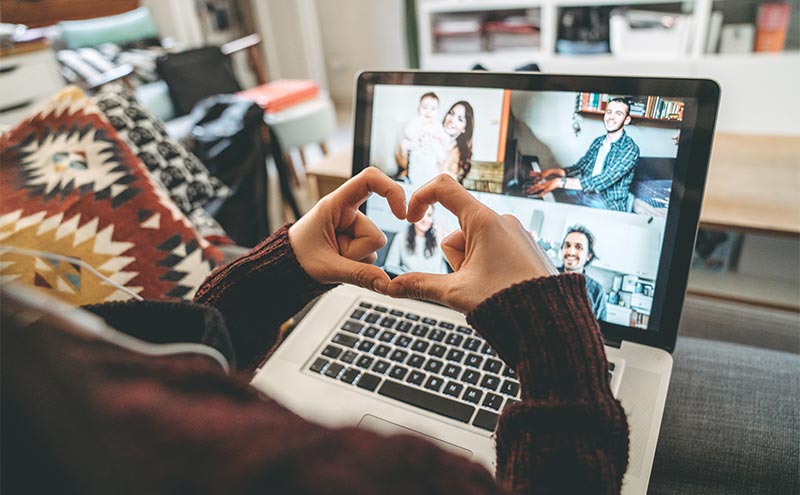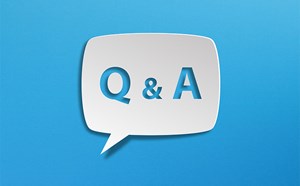
Love in the Time of Corona
“The pain of parting is nothing to the joy of meeting again.” - Charles Dickens
A few weeks before the corona virus had spread nation-wide, my husband and I were attending a wedding in Orlando. The couple had hoped to have an ‘unplugged’ ceremony, a trend I’ve seen more and more recently. (For those that aren’t familiar, the bride and groom request their guests keep their phones and cameras put away. There are dozens of signs in beautiful lettering sold on all the wedding websites for exactly this purpose, “We invite you to be fully present with us during our ceremony…”)
Just two short months ago, an apparent smartphone addiction was deemed at best a necessary evil, and at worst a huge character flaw of our entire generation. Cartoons chided the general population for being more wrapped up in their online social lives than in their real, physical ones. We need campaigns against texting while driving. And yet, these same agonizing two months have completely rearranged our culture’s relationship with the internet and connectivity. What was considered a self-placed shackle is now the lifeline we cling to in order to stay connected to those we love.
2020 will be the year of zoom meetings and virtual happy hour. There are apps to play games with your friends remotely (House Party if you haven’t tried it), play trivia, and even time your Netflix binge together. My husband’s grandmother Zooms with us from her iPad. (And yes, I think all of us now use zoom as both a noun and a verb). I find myself moving back in time, sending cards via snail mail. And yet as someone who had previously deliberately practiced self-imposed phone etiquette (staying in my purse at meals with my husband or friends), I too find myself calling more, texting more, checking in more.
Back on shift, I pause to find the correct N-95. The mask dated to ensure I have waited enough days before wearing it again. I know I am even lucky to have PPE. I am safe. I can come home and hug my husband. I can curl up on my couch and drink a glass of wine and watch a movie and pretend that life as we know it has not changed forever. As we wear and re-wear, use and reuse ‘one time use only’, we are exposed and vulnerable in very literal and very incomparable ways. This PPE that we agonize over, it has changed the way we interact with our patients. It allows us to be close to, to examine our patients. But it also separates and builds a fence. The physical divide of rubber and plastic, masks, gowns, gloves, eye shields. I can’t smile at a toddler or sympathize with pain behind this mask that hides my face. The psychological barrier – the very real fear of catching the virus ourselves, or worse, bringing it home to our family – limits us as well. We are used to checking on our patients multiple times throughout their visit. We have been taught well to always reevaluate after our interventions. Has the abdominal pain improved? Do they really need a scan? Has the MDI worked, do the lungs sound clear? Even explaining incidental CT scan findings becomes difficult. Every lab we add on, every medicine we order means another gamble going into the room, either for us or for someone on our team. Although as EM physicians we operate comfortably within the wide gray between death and life and resuscitation, we have never had to see our own gray to quite this extent or had to look it full in the face. We protect ourselves and our team, perhaps at the cost of the physician-patient relationship, perhaps paying an internal price of our own existential and moral and spiritual dilemmas.
For many EM physicians, we have a nice home, steady income, social support, and the quarantine has certainly been disruptive but maybe not devastating. However, there have also been EM physicians threatened with child custody rearrangements. Whose spouses retreat to a different part of the house. Who have been asked to stay in a hotel. And even these, which are emotionally overwhelming situations, are better still than some. Sick and elderly parents stay in assisted living denied visitors. Our patients die alone without loved ones to hold their hand. Many have been hustled into isolation at the very time when we hunger most for reassurance and solace of community. Many are grieving: the loss of our previously imagined stable and reliable careers and lives, mourning loved ones who died, loss of income, loss of visitors, loss of freedom, or loss of activities. This powerlessness is unsettling to our soul. Our safety or even physiological needs are not being met. So, the idea that quarantine is the perfect time to complete all those pinned Pinterest projects and reach self-actualization is absurd. And just as we are each struggling with our own burdens, we each need to find our own individual unique path that leads us from grief, or even despair, to healing.
When I find myself feeling melancholic, sometimes the best strategy is to just go with the flow. Music, poetry, and literature all have therapeutic ways of reflecting on tragedy and sadness without being swallowed by it.
And before I go to sleep each night, I fiercely practice finding gratitude. This is not about artificially creating happiness. Gratitude appropriately recognizes the people and circumstances in our lives that bring meaning and fulfillment.
The decrease in volume at my hospital has meant less of a push on times. I know this is not the case everywhere, where virus and non-virus acuity wreak havoc on supplies and staff and volume. I spend more time upfront, certain to get the entire history and physical exam. To limit piece-meal workup yes, but with the added benefit of taking back a little connection. I use this time to sit and ask peripheral questions. Through a mask I can still listen to their story. Through gloves I can still hold their hand.
At home there is no shortage of connection, but the threat of complacency and monotony roam free. Our date nights look very different than before, and it takes active work to come up with something more than the standard dinner/movie combo. We took walks in our neighborhood, by the waterfront, visited our local botanical garden. We went strawberry picking and brought home fresh vegetables and made new recipes. I made my first Easter ham, and used all of our wedding china and crystal. We opened many bottles of wine previously reserved for a ‘special occasion’. We watched all of the Star Wars movies to celebrate May the 4th. We discovered and played new board games, delivered birthday treats, cleaned out our closets and checked off projects on long forgotten to-do lists. We enjoyed zoom happy hours, frequent calls to our parents, virtual baby showers, and even a motorcade drive by wedding. It has not been all rainbows and sunshine; there have been plenty of terse words and tears, but we have lived life and made it ours.
It is easy for me to gloss over the bad days. I have my log of gratitude to reflect upon, and I only have pictures from when I felt joy. We cannot erase the terrible and suffering, or ever suggest the pandemic or quarantine or economic turmoil or a single loss of human life is a good thing. But we have learned important lessons. Health disparities still abound among minority populations. Epidemiology and virology continue to stump our scientists and demand humility over and over. Historically, as a nation we have shown a collective spirit and resilience through hard times, and I hope it is in this path we choose to move forward. We still have a long way to go. Kindness is a choice, love an action, and we can make these just as contagious as COVID.
“Our human compassion binds us the one to the other – not in pity or patronizingly but as human beings who have learnt how to turn our common suffering into hope for the future.” Nelson Mandela
By: Dr. Michelle Caskey



